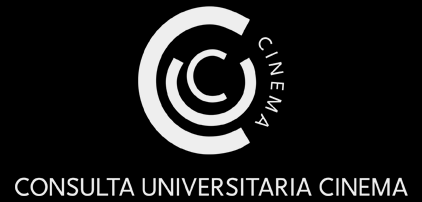Il concetto di “storia” si misura in primo luogo con quello che fin da Aristotele e dalla tradizione classica era immaginato come il vincolo fondamentale tra l’insieme di ciò che accade e la narrazione che se ne fa. Ciò che chiamiamo “storia” riguarderebbe il racconto di quanto è “realmente” accaduto. Anche se, e ce lo dicono alcuni esempi del cinema italiano più recente (Esterno notte di Marco Bellocchio, Il sol dell’avvenire di Nanni Moretti), in arte e al cinema si potrebbe fare la storia anche con i “se”.
Di seguito quattro possibili linee di ricerca attorno a questo tema.
Storia come archeologia. Se il linguaggio artistico può scegliere di indagare la storia secondo la sua linearità cronologica, può inversamente optare per decostruire il suo andamento orizzontale affrontando quest’ultima a partire dalle sue più profonde stratificazioni. Affondare archeologicamente nella storia vuol dire compiere parallelamente un lavoro di scavo nel tempo non più vincolato ad un movimento “in avanti” bensì libero di aprirsi a gesti di sovrapposizioni, dilatazioni, condensazioni che operano sulle epoche storiche in senso anacronistico. Sono le arti in genere e non solo il cinema a realizzare ciò che Walter Benjamin chiamava «immagine dialettica», Aby Warburg «Nachleben», Hans-Georg Gadamer «fusione di orizzonti» (per citare tre delle teorizzazioni fondamentali in proposito). In tutte queste riflessioni il passato si dimostra capace di dialogare con il presente incrociando sensibilità diverse eppure in grado di risuonare in un’unica integrazione di senso. Non solo l’Atlante di Warburg, naturalmente, ma tutte le grandi operazioni che nel Modernismo hanno costruito attraverso il “montaggio” sintesi anacroniche di elementi della tradizione occidentale e della sua storia (The Waste Land di Eliot, Ulysses di Joyce).
Storia e storie. La Storia con la maiuscola si presta costantemente, nella pratica artistica, ad intersecarsi con le storie con la “s” minuscola (come è ben visibile ne Il sol dell’avvenire di Moretti). Se esiste un approccio storico tradizionale per lo studio della dimensione ufficiale di quest’ultima, raccolta da una memoria collettiva che scrive attraverso una documentalità riconosciuta il proprio passato, una via alternativa percorre le testimonianze dei cosiddetti “anonimi” (su cui Foucault e Rancière ci hanno detto), che contribuiscono alla narrazione a partire da prospettive marginali – una «letteratura minore» (Deleuze e Guattari) – che tuttavia, pur parlando da una “micro-dimensione”, riescono ad occupare punti di vista originali e spesso illuminanti. Nel cinema questo accade tanto più dagli anni ottanta/novanta in poi, quando il riuso delle immagini d’archivio – istituzionali ma anche private – entra a far parte in modo progressivamente massiccio nei montaggi documentaristici. È spesso proprio a partire dal «collage» (Wees) con gli “home movies” che, anche in epoche ben più recenti, le “storie minori” si fanno strada all’interno dei racconti ufficiali. Sono tanti i cineasti che possiamo nominare: da Forgács a Perlov, passando per Mekas, Akerman, Sokurov, Loznitsa, Herzog e arrivando ad una produzione nostrana sotto questo orizzonte sempre più feconda (Marazzi, Bellocchio, Marcello, Nicchiarelli).
Storia e finzione. “Raccontami una storia”. È evidente come questo termine si apra semanticamente ad accezioni che si discostano dal significato di storia come “testimonianza documentale” presentandosi al contrario come manipolazione di un «tempo del racconto» inventato (Ricoeur). Storia diventa allora in questo caso essenzialmente sinonimo di narrazione e dunque di una creatività messa al servizio della rielaborazione di un tempo reale in termini finzionali – dalle sue manifestazioni più essenziali (l’unità di spazio-tempo aristotelica) a quelle più complesse (il romanzo otto-novecentesco). Sono in questo senso teatro e letteratura ad aver fatto da “apri-pista”, seguiti da un cinema che, se da una parte innesta in una forma plastica autonoma un tempo “romanzesco” svincolato dalla pura azione (Bazin), dall’altra attinge dalla letteratura storie di finzione traducendole in grandi adattamenti audiovisivi (da Coppola a Spielberg, da Visconti a Pasolini, arrivando a cineasti contemporanei come Marcello o Costanzo). È interessante come spesso anche il racconto “del reale” si serva in questo senso di elementi appartenenti alla favola, al mito, alla fantascienza, al realismo magico, facendo sì che la Storia (persino gli elementi di essi più cronachistici) diventi il risultato di una elaborazione immaginativa. In questi casi è precisamente una certa operazione di “falsificazione” a produrre un incremento di realtà – «realismo estetico», l’avrebbe definito Bazin – capace di autenticare una verità storica.
Le cesure della Storia. Le arti hanno vissuto le più grandi trasformazioni quasi sempre in concomitanza con le grandi cesure della Storia. Se prendiamo in considerazione il cinema, basti pensare al Neorealismo in Italia, o al cinema apocalittico post-11 settembre, o ancora, oggi, al cinema post-pandemico. Il legame di un’opera o, in termini più ampi, di un genere con un preciso tempo storico riconnette questi necessariamente ad uno specifico contesto ambientale. Ecco che allora le grandi catastrofi mondiali hanno portato le arti e i linguaggi artistici (figurativi, teatrali, letterari, cinematografici) a cambiare. Radicate in uno spazio (urbano o non urbano) condizionato dalle svolte della storia, le arti hanno assorbito e rielaborato tale contesto – il paesaggio fatto di macerie, materiali e morali, della guerra e del dopoguerra (Otto Dix e la Prima guerra mondiale, Guernica di Picasso, per citare solo due esempi pittorici), gli scenari distopici post-virus ecc. Il rapporto tra cesure della Storia e trasformazioni dei linguaggi artistici e della forma delle immagini è ad esempio al centro di un’opera capitale come le Histoire(s) du cinéma di Jean-Luc Godard.
Deadline per la consegna dell’abstract: 10 settembre 2023
Deadline per la consegna del saggio: 19 novembre 2023
I testi, che devono essere scritti e composti appositamente per la rivista, devono rientrare nelle dimensioni qui indicate:
Focus: min. 35.000 max 40.000 battute (spazi e note inclusi)
Rifrazioni: min. 15.000 max 20.000 battute (spazi e note inclusi)
Da inviare a: redazionefatamorgana@gmail.com
Call for Papers
The concept of “history” first of all refers to what since Aristotle and the classical tradition was imagined as the fundamental link between the whole of what happens and the narration that is made of it. What we call “history” means telling what “really” happened. Even if, as some examples of more recent Italian cinema tell us (Marco Bellocchio’s Esterno notte, Nanni Moretti’s Il sol dell’avvenire) in art and cinema history could also be made with “ifs”.
We outline below four possible lines of research around this theme.
History as archaeology. If the artistic language can choose to investigate history according to its chronological linearity, it can inversely opt to deconstruct its horizontal trend by tackling the latter starting from its deepest stratifications. Archaeologically sinking into history means carrying out a parallel excavation work in time no longer bound to a “forward” movement but free to open up to gestures of superimposition, dilation, condensation that operate on historical eras in an anachronistic sense. It is the arts in general and not just the cinema that realize what Walter Benjamin called «dialectical image», Aby Warburg «Nachleben», Hans-Georg Gadamer «fusion of horizons» (to mention three of the fundamental theories in this regard). In all these reflections the past proves to be able to dialogue with the present by crossing different sensitivities yet able to resonate in a single integration of meaning. Not only Warburg’s Atlas, of course, but all the great operations that in Modernism have built through the “montage” anachronistic synthesis of elements of the Western tradition and its history (Eliot’s The Waste Land, Joyce’s Ulysses).
History and stories. History with a capital letter constantly lends itself, in artistic practice, to intersect with stories with a small “s” (as is clearly visible in Moretti’s Il sol dell’avvenire). If there is a traditional historical approach to the study of the official dimension of history, collected from a collective memory that writes its past through a recognized documentality, an alternative way runs through the testimonies of the so-called “anonymous” (on which Foucault and Rancière reflect), who contribute to the narration starting from marginal perspectives – a «minor literature» (Deleuze and Guattari) – which however, while speaking from a “micro-dimension”, manage to occupy original and often illuminating points of view.
In cinema this happens from the eighties/nineties onwards, when the reuse of archival– institutional but also private – images becomes a progressively massive part of documentary montages. It is often starting from the “collage” (Wees) with the “home movies” that, even in much more recent times, the “minor stories” make their way into the official stories. There are many filmmakers we can name: from Forgács to Perlov, passing through Mekas, Akerman, Sokurov, Loznitsa, Herzog and arriving at an increasingly fruitful local production under this horizon (Marazzi, Bellocchio, Marcello, Nicchiarelli).
History and fiction. “Tell me a story”. It is evident how this term opens up semantically to meanings that deviate from the meaning of history as “documentary testimony” presenting itself on the contrary as the manipulation of an invented “narrated time” (Ricoeur). In this case, history becomes essentially synonymous with narration and therefore with a creativity placed at the service of the reworking of a real time in fictional terms – from its most essential manifestations (the Aristotelian space-time unity) to the more complex ones (the novel of the nineteenth-twentieth century). In this sense, theater and literature have acted as an “opener”, followed by cinema which, if on the one hand grafts into an autonomous “novelistic” form free from pure action (Bazin), on the other draws from literature fictional stories translating them into great audiovisual adaptations (from Coppola to Spielberg, from Visconti to Pasolini, arriving at contemporary filmmakers such as Marcello or Costanzo). It is interesting how often even the story “of reality” makes use of elements belonging to fairy tales, myths, science fiction, magical realism, making history (even the most chronicle elements of it) become the result of an imaginative elaboration. In these cases it is precisely a certain operation of “falsification” that produces an increase in reality – “aesthetic realism”, as Bazin would have defined it – capable of authenticating a historical truth.
The caesuras of history. The arts have experienced the greatest transformations almost always in conjunction with the great caesuras of history. If we take cinema into consideration, just think of Neorealism in Italy, or post-9/11 apocalyptic cinema, or even today, post-pandemic cinema. The bond of a work or, in broader terms, of a genre with a precise historical time necessarily reconnects it to a specific environmental context. So then the great global catastrophes have led the arts and artistic languages (figurative, theatrical, literary, cinematographic) to change. Rooted in a space (urban or non-urban) conditioned by the turning points of history, the arts have absorbed and reworked this context – the landscape made of rubble, materials and morals, of the war and the post-war period (Otto Dix and the First World War, Guernica by Picasso, to cite just two pictorial examples), post-virus dystopian scenarios, etc. The relationship between caesuras of history and transformations of artistic languages and the form of images is, for example, at the center of a capital work such as Histoire(s) du cinéma by Jean-Luc Godard.
Deadline for the submission of the abstract (150 words): September 10, 2023
Deadline for the submission of the essay: November 19, 2023
Essays should be expressly written for the journal and should strictly respect the following word limit:
Focus: Min 5000 Max 6000 words (including spaces and footnotes)
Rifrazioni: Min 2000 Max 3000 words (including spaces and footnotes)
Send to: redazionefatamorgana@gmail.com
Call for Papers





